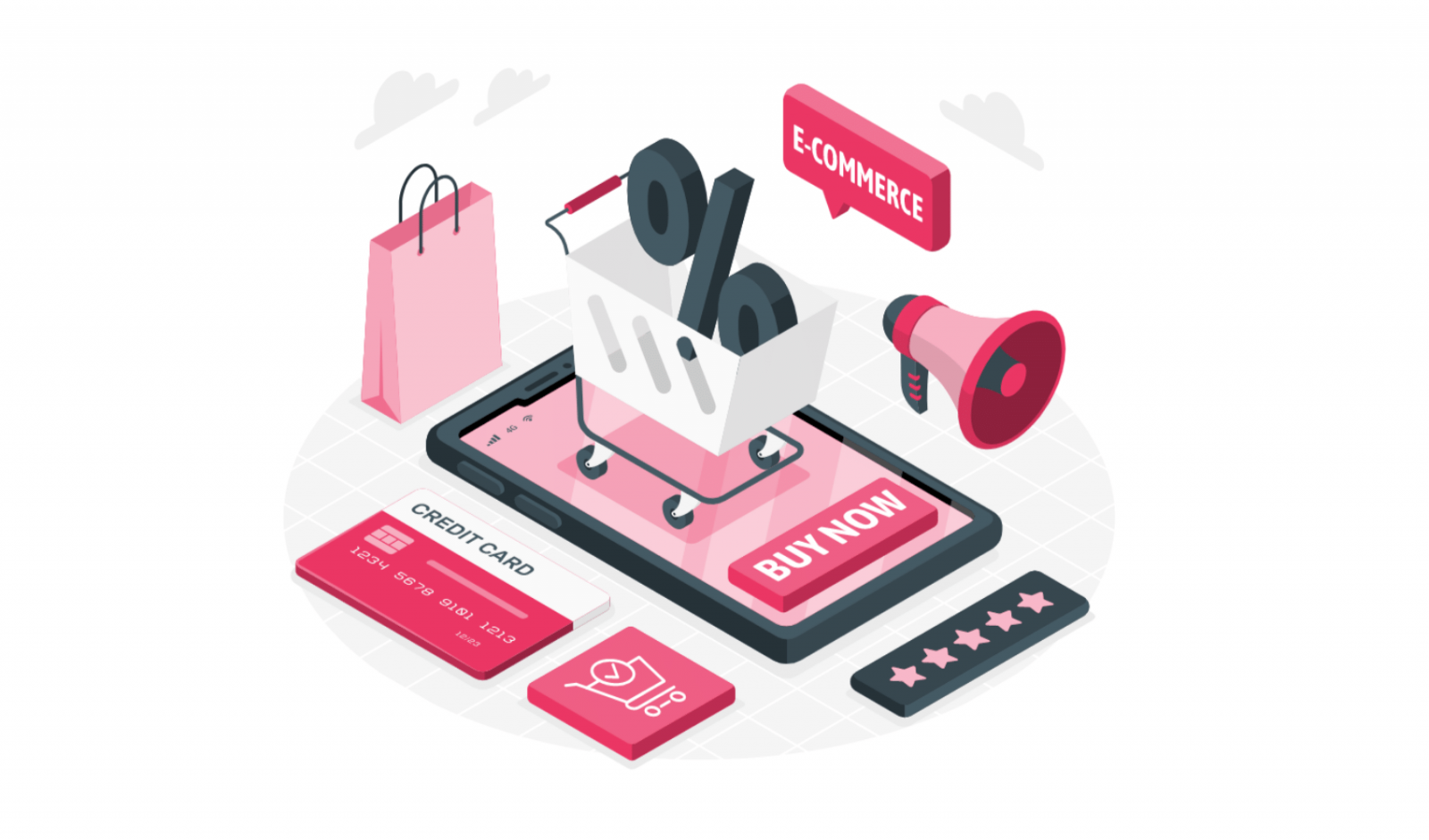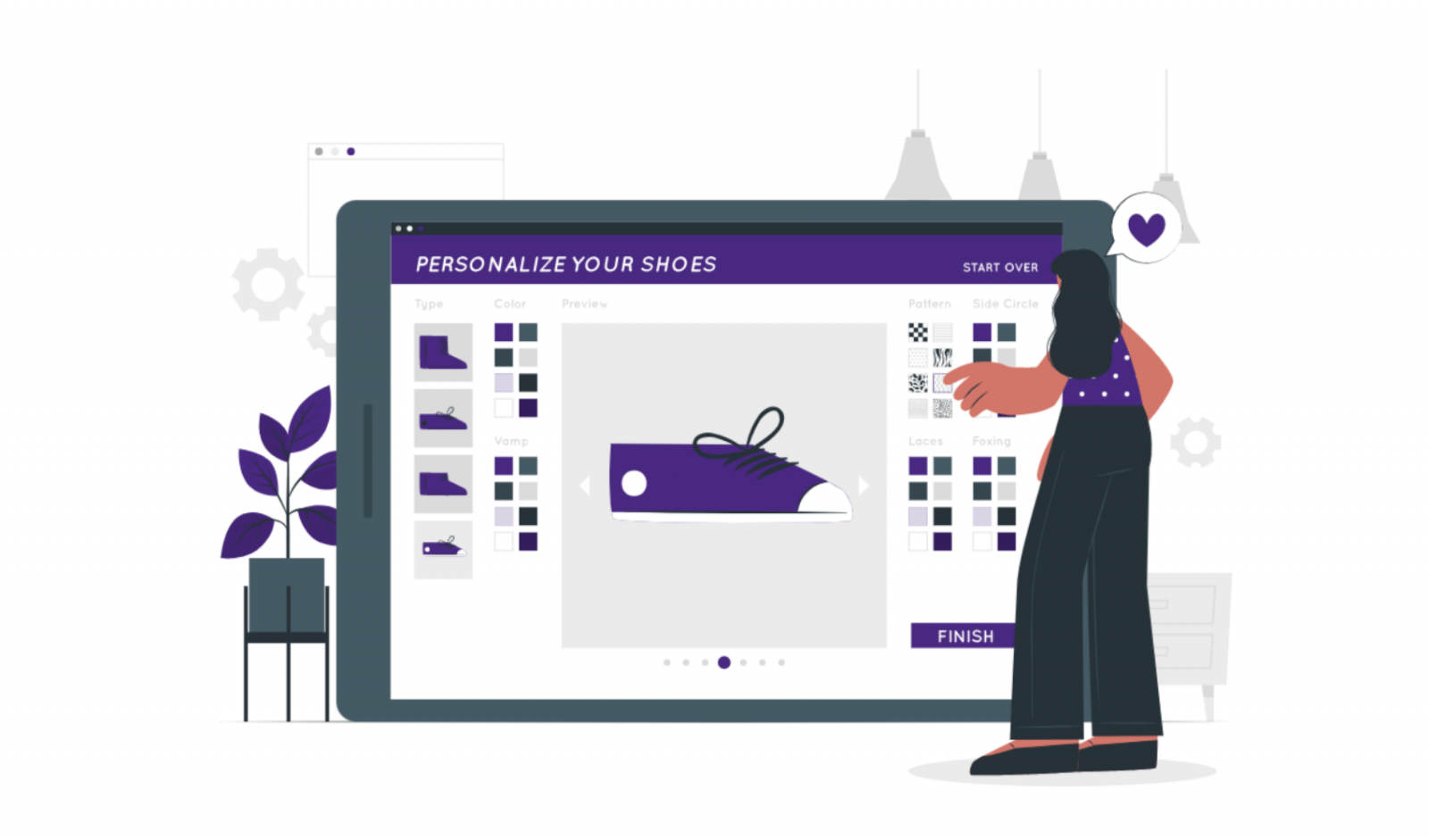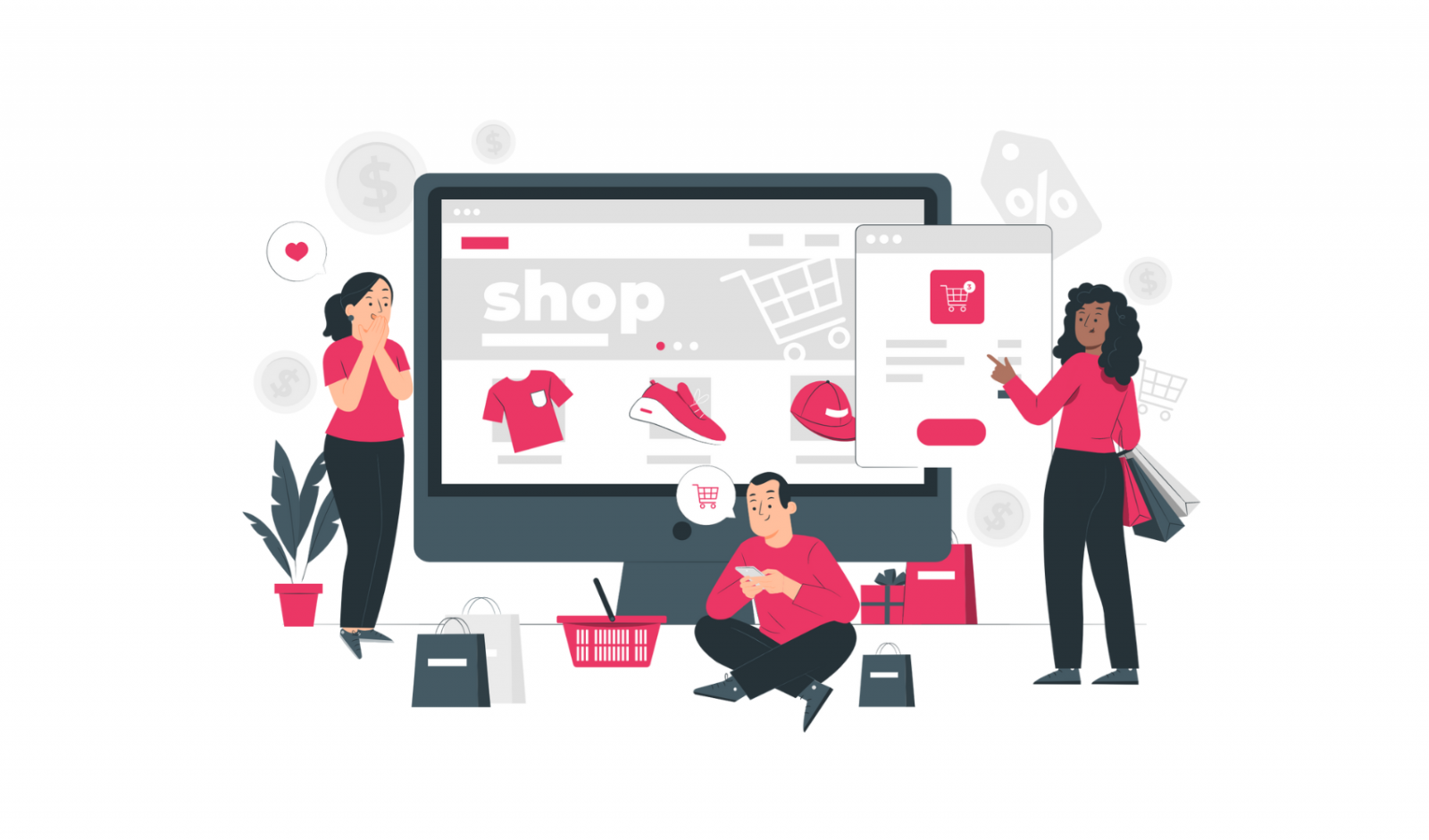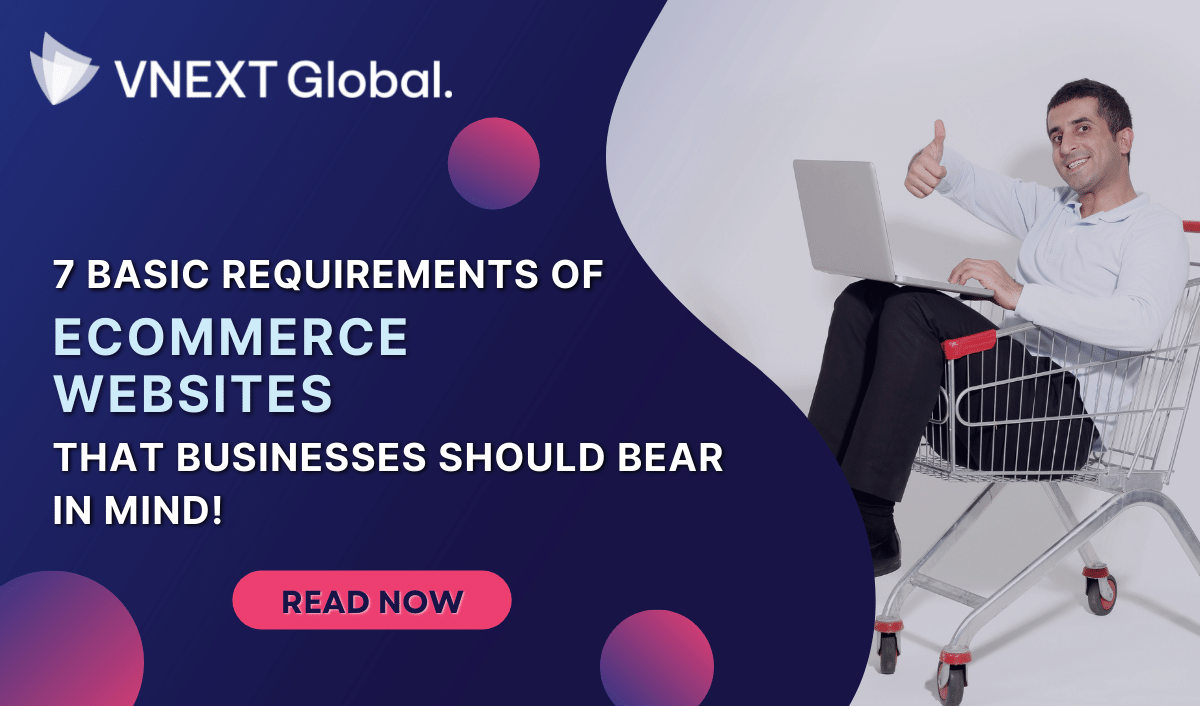Author: Chi Vo - Content Writer
2022 has witnessed a new wave of e-commerce trends and technological innovation, especially in the retail market. Specifically, the arrival of the metaverse and a digital-first purchase journey has paved the road for innovation around the globe, as brands collect data-driven insights to develop engaging, holistic, and immersive retail experiences.
To stay up with the digital trend, many brick-and-mortar stores have turned to web-based online e-commerce platforms. However, as more stores digitize their operations, they are facing more competition. Therefore as a business owner, to compete in the e-commerce industry, you should bear in mind 7 following basic requirements of e-commerce.
1. Speed loading, cyber security, and stability
A web hosting service is required to publish your eCommerce website. Web hosting provides all of the services needed to develop, save, and maintain websites.
It also looks after your website's speed, stability, and cybersecurity, all of which are critical for any e-commerce business. We'll go over each factor now.
A. Speed loading
Page speeds have a great impact on the user’s experience as lightning-speed load times can leverage user satisfaction. Or else, it can cause many unexpected troubles, resulting in revenue loss. Here are a few statistics to help you understand how important this impact is:
- 79% of customers “dissatisfied” with a site’s performance are less likely to buy from them again
- 64% of smartphone users expect a website to load in four seconds or less
- 47% of online shoppers expect web pages to load in two seconds or less
Thus, when developing an online e-commerce platform, businesses should closely pay attention to speed loading time. There are some small actions you should take to speed up the site response time such as compressing images before uploading (<300kb), reducing your redirect link, caching your web browser, minifying CSS, JavaScript, and HTML, etc.
B. Cyber security
As the frequency of cyber-attacks has significantly climbed up recently, the concern about cyber security becomes more vital than ever. Especially with e-commerce, where consumers directly make payments and provide personal information such as bank account ID, address, etc, the importance of cyber security cannot be underestimated.
Some criteria to be concerned with are:
- Secure online e-commerce platform: to choose the appropriate platform, run PCI scans on your server to validate whether you are compliant or not.
- SSL certificates: to authenticate users’ identity and encrypts data both on the store and in transit.
- Two-factor authentication (2FA): valid authentication needs to provide 2 layers of identification: (1) user name/ passwords combo, (2) autogenerated code sent to the user’s verified phone number
- Virtual private network (VPN): consider an SSQ-based VPN, or OpenVPN if you consider costs.
C. Stability
If your store closes unexpectedly while your clients are shopping, you will lose a lot of money and possibly your reputation. For eCommerce, digital storefronts must be operational at all times, unless they are under maintenance.
In fact, uptime - when your business is online - should be at least 99%, while downtime - time for maintenance, system issues, and so on - should be less than 1%.
2. User-friendly design on website and mobile
If your store is simple to use, you will have a better chance of generating a sale right away. The homepage should be engaging and should entice users to click on items or categories they want to buy. Categories should be clear and divided into subcategories to allow visitors to quickly explore their desired products.
Once the user wants to find information, the search bar should be easy to discover and immediately list all personalized items that are available.
Not only should the website be friendly, but so should the mobile display, as mobile visits increasingly outnumber desktop visits in many circumstances. Your e-commerce site must be developed and constructed for all devices, not only desktop or laptop PCs.
Business owners must pay close attention to detail to guarantee that their mobile web pages are flawless. For instance, you should expand call-to-action buttons for easy fingertip touches, or modify text banners to be completely visible on smartphones.

3. Clear brand information page
The homepage, category pages, and product pages are the most significant for an online e-commerce platform because they highlight features of your products,
However, it is critical not to overlook additional information sites such as:
- About Us
- FAQ
- Terms & Conditions
- Private Policy
- Contact Us
- Policy on Returns
These pages have their own objectives. While the About Us section allows you to showcase your brand's traits and urge people to buy, the Return Policy lets them know exactly what to expect if they wish to return an item and avoids unnecessary arguments.
However, in general, these websites give clients important information that can influence their purchasing decisions, demonstrate your thoughtfulness, and improve your store's reputation.
As a result, make certain that your information pages are both interesting and informative.
4. Develop a product listing page (PLP) and product detail page (PDP)
The product listing page and product detail page are two inseparable components of a complete e-commerce site.
An effective product listing page (PLP) helps shoppers narrow down a given selection and find relevant products. A complete PLP should contain the following elements:
- Categories name: usually a dropdown or top navigation to organize and categorize the business’s product lists
- Breadcrumbs: let users navigate easier and reduce the bounce rate
- Sort menu (Filter menu): a dropdown menu displays sorting options including Features, Price range, Rating, Color, Star
- Product details: below a PLP, displayed products should include the item name, model name, price, available color, etc.
Not least important, your product detail page (PDP) will comprise a variety of product attributes, and the developing team should be aware of them in order to integrate the appropriate features. Will the customer be allowed to select a product size/ shape and color? Do you make use of how-to videos on product detail pages? Will some key product attributes be displayed in a menu (similar to the mega-menu)? If feasible, make a list of all the product attributes that your website should include and give it to your developers.
Below are some recommendations for product attributes:
- Single and package product kinds must be supported by the website.
- Product images on the PDP should be zoomable.
- Rating stars for product reviews should be enabled.
For more information, refer to this related topic: What Are Must-have E-commerce Pages For An E-commerce Website?

5. A complete checkout process
The checkout process is the set of actions a customer takes in an e-commerce store to purchase the products in their shopping cart. This encompasses all of the steps a customer takes to get to the checkout page. A flawless checkout sequence will deliver a seamless consumer experience.
The following is an example of a typical customer checkout procedure:
shopping basket > billing information > shipping information > shipment method > order preview > payment > confirmation
This standard payment method is optimal and keeps your consumers on track, particularly in terms of decreasing sale losses and checkout abandonment.
6. Product reviews section
Aside from pricing considerations, people have several reservations about purchasing things from a brand they have never purchased from before. This is especially true if you offer high-priced items such as electronics or furnishings.
Product reviews are one of the most persuasive techniques to break down this barrier and increase new clients' purchasing confidence. People look for reviews on purpose in order to get confidence and information. If, on the other hand, a site has few or no evaluations, visitors may distrust the brand's dependability and, in many situations, will refrain from purchasing.
As a result, each eCommerce newcomer should make an effort to acquire reviews and testimonials.
7. Performance report and analytics tools
Reports are critical for determining the next step in the performance of your website.
Aside from revenue and the number of products sold, there are a few more metrics to be aware of. Sales conversion rate, internet traffic, email opt-in rate, average customer value, and cart abandonment rate are a few examples.
Any prominent eCommerce platform can give analytics and statistics. For example, Magento offers reports for sales, taxes, abandoned shopping carts, and the most viewed products.
Next, Google Analytics is the most widely used analytics tool. Google Analytics may help you assess SEO success, understand diverse consumer sources, and identify your most popular web pages, among other things.
Furthermore, Screaming Frog is a terrific consideration if your online e-commerce platform needs to assure SEO-friendliness and wants to assess some integrated indicators such as speed loading time, content SEO optimization, backlinks, and external links.
As your company grows, you may integrate more data tools to make use of AI and big data analytics for a more in-depth look at your customers.

Final thoughts
In this article, we have provided some fundamental and up-to-date e-commerce requirements. VNEXT Global hopes you can have some in-depth insights and get ready for your e-commerce building plan. If you need any assistance regarding this field, kindly consider VNEXT Global services.
If you are looking for a trusted IT partner, VNEXT Global is the ideal choice. With 14+ years of experience, we surely can help you to optimize your business digitalization within a small budget and short time. Currently, we have 400+ IT consultants and developers in Mobile App, Web App, System Development, Blockchain Development and Testing Services. We have provided solutions to 600+ projects in several industries for clients worldwide. We are willing to become a companion on your way to success. Please tell us when is convenient for you to have an online meeting to discuss this further. Have a nice day!
Author: Chi Vo - Content Marketing Executive












